
Spring is the ideal time for a fresh start! Whether that means having one big clear out, starting a new project, or getting organized, it presents the perfect opportunity to have a bit of a change! So why not get your cat or dog involved with your spring overhaul so that they can start the new season in tip-top condition! So, how do you begin a spring clean of your cat or dog’s life?
Remove Pet Hair from Around the Home
Before making a start to your cat or dog’s own spring clean, grab the supplies and get to work on removing any pet hair or dirt from around the home. Many pet parents will agree that getting rid of animal hair from around the house seems to be an impossible task, especially if you’ve got a cat or dog that sheds a lot.
However, there’s no need for harsh chemicals when cleaning the house with pets. For your carpets, a top tip is to sprinkle down some baking soda before vacuuming. Not only will this help to remove hair, but the baking soda will minimize odors. Just be sure to use a vacuum that has been specifically designed for dog and cat hair to make things a bit easier!
When it comes to cleaning fabric sofas, you can simply use a dry sponge, and this will pick up any cat or dog hair lying around. For more household cleaning tips with pets, you can read our previous blog Cleaning Tips For Dogs Who Love Mud!
Using a pet blanket on top of beds and sofas, however, is the best way to keep your furniture protected in the first place, as well as providing your pet with a cozy spot to relax.
Clean Your Pets’ Beds
Now that the household spring clean is complete, it’s time to focus on your pet, and a great place to begin is by cleaning their bed. We wouldn’t like to sleep on a dirty mattress, so neither would our pets. And with dogs sleeping between 13 and 14 hours a day, and cats between 12 and 16, it’s fundamental to provide them with a clean, secure, and safe place to rest. Fortunately, all Omlet beds are conveniently easy to clean, with removable covers and toppers that are machine washable.
Alternatively, treat your cat or dog to a new bed this spring. For cats, the Maya Donut Bed comes in a wide range of colors that can add a touch of spring freshness to your home for the season. The Topology bed is perfect for dogs, with the option of raised feet, which improve home hygiene and airflow.
Give Your Cat or Dog a Groom
Spring cleaning wouldn’t be complete without a bit of a pet makeover! Well, not necessarily a full head to paw transformation, but a good bath and brush go a long way! Depending on the breed of your dog or cat, they might need to make a visit to the groomers, but it’s a good idea to keep on top of a basic regime at home. Furthermore, grooming is not only for your dog or cat’s appearance but is also important for your pet’s health by aiding with keeping their skin healthy and preventing fleas or ticks for example.
Treat Your Pet to Some New Toys and Outdoor Entertainment
Spring means some warmer weather is on the way, so both pet owners and our furry friends will be spending much more time outside. A few new toys will be greatly appreciated by your cat or dog, as they adjust to the new season after spending a lot of winter cozied up indoors. Or how about treating your cat to their very own outdoor cat run, which is perfect for indoor and outdoor cats alike, who love adventuring but need to remain safe in the garden.
Prepare for the Heat
Before we know it, summer will be here, so why not get prepared as early as possible by giving your pets the best chance of staying protected from the heat. Something to invest in during spring is a cooling mat for your dog. The Omlet Memory Foam Cooling Mat has a non-toxic self-cooling gel inside, meaning that the mat doesn’t require any refrigerating. You can place your pup’s mat either on a flat surface or on their bed and they’ll stay nice and cool for up to three hours – the perfect summer accessory!

The Omlet Cooling Mat is super easy to clean, with a quick wipe down!
Spring is just around the corner, so there’s nothing stopping you from beginning your tidy up from today! Before you start cleaning your home, however, it goes without saying that any cleaning products you use in your house should be pet-safe, so always make sure to check the labels. How will you be spring cleaning your cat or dog’s life?
This entry was posted in Cats
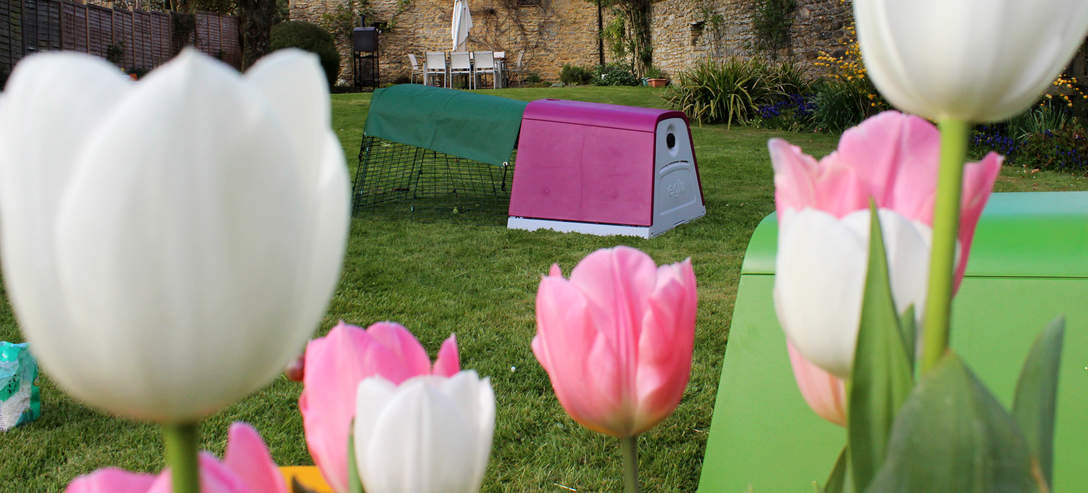 Spring has nearly sprung, which of course means new beginnings! Many of us will make a start to the annual spring clean and take advantage of the slightly longer days and warmer weather by spending some more quality time outdoors again. And just like us, our pets appreciate all that spring has to offer after a long winter! For our furry friends, this season means more time outside in their run, where there will now be a lot less mud, and plenty of luscious grass to play in and peck at. But before your pets head out again, get them involved with the spring clean and give their run a tidy up as well!
Spring has nearly sprung, which of course means new beginnings! Many of us will make a start to the annual spring clean and take advantage of the slightly longer days and warmer weather by spending some more quality time outdoors again. And just like us, our pets appreciate all that spring has to offer after a long winter! For our furry friends, this season means more time outside in their run, where there will now be a lot less mud, and plenty of luscious grass to play in and peck at. But before your pets head out again, get them involved with the spring clean and give their run a tidy up as well!
Move Runs to a Fresh Space
Before beginning a spring clean, you’ll want to take your chickens, guinea pigs, or rabbits to a temporary enclosure to keep them safe and out of the way. Once this is done, you can move their run to a fresh spot in the backyard. All Omlet runs can be transported and can then simply be secured in their new position using the Omlet screw pegs.
As we’ll now (hopefully!) have a bit more sun, place your run in an area where your pets will have plenty of room to explore. When we head later into the season, it’s a good idea to purchase some weather protection for your run, which will keep your animals shaded from the sunlight.
Change Their Bedding
Guinea pig and rabbit bedding should be changed frequently (twice a week), so be sure to include this job when you’re carrying out the spring clean. Fortunately, the Omlet rabbit hutches and guinea pig hutches can be easily navigated to change bedding with slide-out trays, which can be cleaned and refilled.
For hens, spring is the time of year where you’ll begin to notice an increase in egg laying output after a winter of minimal or reduced egg production. Make sure that your hens’ nesting boxes have soft bedding for chickens, which will provide them with a cozy place to nest, as well as reducing odors in their coop.
Use Caddis to Improve Run Cleanliness
To further improve cleanliness of your rabbit or guinea pig hutch, you can use Caddis as an alternative way of feeding. Not only do Caddi Treat Holders provide pets with the mental stimulation they require but they keep food off of the run floor. In doing so, you’ll also keep unwanted predators and rodents away from your pets.

Give Your Pets a Groom
As well as keeping your pets in pristine condition, grooming is a great way to build a bond, and it’s not just for cats and dogs! So why not hop into the new season with your pet looking their very best, all ready to get back into their run?
Although it might be your first instinct to run your guinea pig a bath if they’re looking in need of a clean, this can actually be harmful for them. Instead, invest in a guinea pig grooming kit and chemical-free wipes, which will help to maintain their fur cleanliness. For more information on guinea pig hygiene, have a read of a previous blog we wrote on this topic.
The amount of grooming a rabbit needs, however, is dependent on its breed. Longer haired breeds such as the Lionhead require a thorough grooming regime, so it’s important that you upkeep this routine all year round.
Chickens are very low maintenance animals and will often bathe themselves in dust to keep clean. You can even offer them a helping hand and make your very own chicken dust bath by converting a bucket or old cat litter tray!
Extend Their Run
Now that your spring clean is complete, why not consider adding a few extras to their run? Your pets will be spending more time outside, so it’s the perfect excuse to get an extension for their run, and the Zippi Run Extension Kits are ideal for making your rabbit or guinea pigs’ play space bigger. For chickens, try the Chicken Walk In Run Extensions, which can be fitted to your existing chicken run to give your flock some extra freedom.
Upgrade Your Pets’ Run With New Toys and Accessories
A few more toys and accessories for your pets’ run won’t go amiss either! Omlet has a wide range for chickens, guinea pigs, and rabbits. The Zippi Shelter with a Play Tunnel is a great option to go for, giving your cavies hours of entertainment in their run, alongside providing them with plenty of exercise, essential for their wellbeing.
Chickens will absolutely love the Omlet Chicken Peck Toy for their run, which can be filled with their favorite treats or feed, stimulating their foraging instinct.
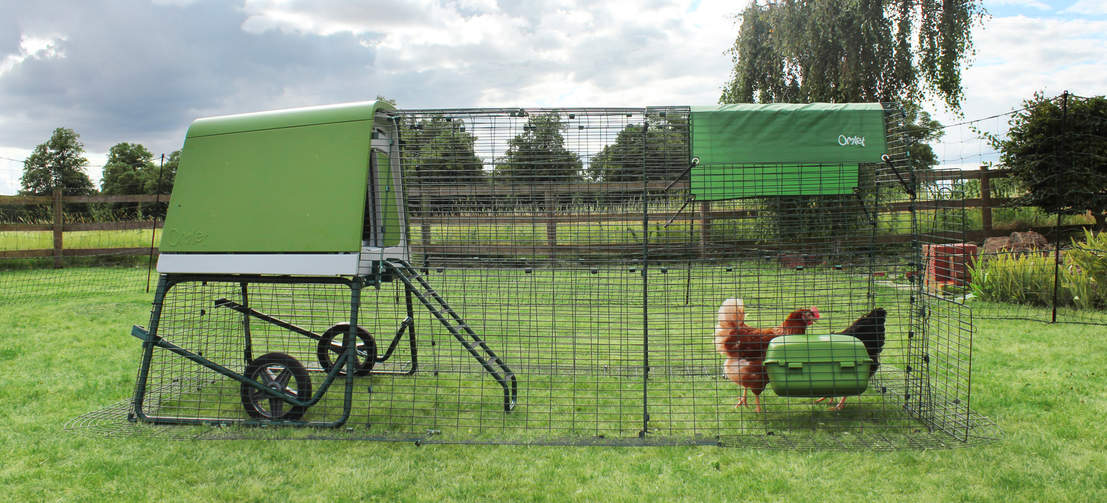
Now you’re hopefully all ready for what spring brings you and your pet. Make a start to upgrading their run today!
This entry was posted in Pets
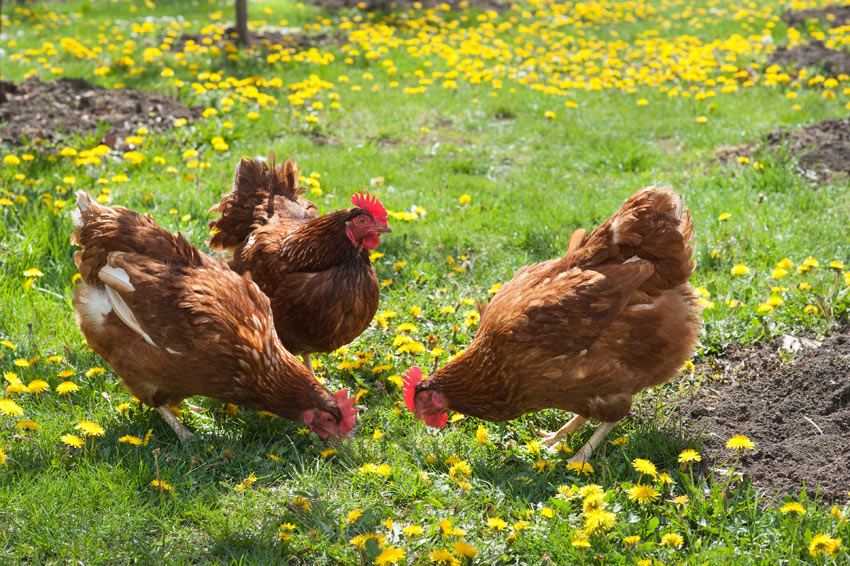
Spring is the perfect time of year to set up a chicken coop and bring home new hens! As your backyard begins to stir from its winter hibernation, your chickens will benefit from the first fresh greens that become available – essential to your hens’ diets. As well as this, the warmer and longer days mean that your chickens will start producing more eggs again after the winter lull. Furthermore, raising chickens in the gentler climate also means that you’ll have a happier and livelier flock!
When Should I Buy Point of Lay Chickens?
Have you ever heard of the term ‘spring chicken’? Well, it actually stems from its literal meaning when in the early 1700s, farmers realized that chickens born in spring were being bought at better prices than those who had already been through their first winter. Most breeders now hatch eggs in December and January, so spring is the time of the year when point of lay, or ‘spring chickens’, become available.
A point of lay chicken is a hen approximately between 16 and 22 weeks old that is just about to begin laying its first eggs, hence ‘point of lay’. This is a good time to get hens, as they are old enough to take care of themselves, but happy to be moved and introduced to a new home. When point of lay occurs, however, can vary somewhat between breeds and other external circumstances. For example, larger hens such as Orpingtons will not reach their point of lay potentially until they are 26 weeks old. For further information on when your hens will begin laying, have a read of our previous blog.
How Long Will Spring Chickens Produce Eggs For?
Having fresh delicious eggs is one of the main reasons why many chicken keepers decide to keep hens to begin with. Therefore, choosing the right time of year to get chickens is something to consider to ensure that you have a frequent supply of eggs for as long as possible.
Chickens will stop laying when they are around six years old, with egg production becoming more infrequent as your hen gets older. Bringing hens home during spring when your chickens are at the very beginning of their laying lives will give you at least three years of dependable egg production. To give your hens a helping hand with their egg supply, you should supplement their diet with plenty of calcium to strengthen the quality of their eggs. An egg shell improver is a perfect way to get this essential mineral in for your flock!
Spring Means Happy, Healthy Chickens!
Now, this isn’t to say that your chickens will be unhappy should you get them during any other season that isn’t spring- far from it in fact. If you prepare accordingly for more extreme weather that other seasons bring, your flock can flourish any time of the year.
However, spring makes raising chickens that little bit easier. The season follows on from a cold winter when your flock would have had less grass to peck at and have spent more time cooped up as opposed to out in their runs or running free-range. Furthermore, the wintertime means that just like us, some chickens with a weak constitution can be more vulnerable to illness, whilst in summer your flock needs that extra bit of help to stay cool. The spring climate on the other hand is just right! Nevertheless, there are some other advantages to getting chickens during winter, autumn, and summer, which we’ll discuss later in the blog.
Red Mite Control
Something to be aware of as a prospective chicken keeper when getting hens in spring is red mite. Red mites can be a problem in chicken coops but fortunately, their numbers drop drastically in the winter. Early spring, therefore, is a good time to spray your chicken coop and run against these tiny blood-sucking creatures before the warmer weather causes a population boom.
Red mites love traditional wooden coops, with plenty of nooks and crannies for them to get into. Should you run into a problem with red mites in your coop, a suitable mite spray should do the job. However, an even better year-round preventative action is to give your spring chickens a coop that is practically mite-free. Keeping chickens in a state-of-the-art plastic chicken coop such as the Eglu range gives these pests nowhere to hide. Since the Omlet Eglu Coops can easily be washed in a few simple steps, red mites don’t stand a chance!
While you’re zapping the red mites, spring is also the best time of year to treat hens for parasitic worms. You should also continue to give them their regular chicken general health check during this season. Again, there are relatively few of these parasites in the environment at the end of winter, so treating the chickens now is a great preventative measure.
Hatching Chicks in Spring
Now we’ve established that spring is the perfect time of year to get point of lay hens, can the same be said about buying baby chicks, or even hatching them yourself? Deciding whether you should get/hatch baby chicks over choosing a slightly older point of lay pullet is dependent on what your priorities are as a chicken keeper.
As we discovered, should you opt to get a point of lay hen over this season, then they’ll of course be ready to start laying during the spring and summer when we have the most daylight. This is something to bear in mind as if you hatch/buy a baby chick in spring, you could be waiting six months before they’ll produce their first egg. For example, if you hatch an egg in April, it might not be until October when they begin egg laying, and with fewer daylight hours, chickens produce fewer eggs.
This being said, spring is still a very popular time to get baby chicks for many chicken keepers. Other than how utterly adorable they are, raising chicks is also an incredibly rewarding process, watching them grow up from the very beginning. More specifically why spring is a great time to raise chicks is because you have the advantage of warmer, but not too hot, weather. When your chicks have reached four to five weeks, they can be moved permanently to their outdoor chicken run, so your young chicks can enjoy plenty of time having fun in the sunshine that winter chicks would miss out on until they’re older.
If you decide that you would like to hatch chicks, Omlet has a wide range of supplies and guides to help you along your journey, from incubation and beyond. Have a read of our Step by Step Guide to Hatching Chicks blog for some tips on where to begin.
Expanding Your Flock With New Breeds in Spring
If you’ve been chicken keeping for a while now and considering introducing a few new birds to your flock, then spring is the ideal season to expand! Should you expand your flock with purebred chickens, they will generally only lay between spring and autumn, making this season the perfect time to maximise egg laying for the year ahead.
Whilst general advice says to keep your flock the same breed, this doesn’t necessarily have to be the case. A range of chicken breeds can live in harmony, what’s more important is that they are of a similar age and size. Furthermore, having an understanding of the personalities of your existing flock and the traits of the breeds you plan on introducing is something else to consider, to ensure they don’t clash.
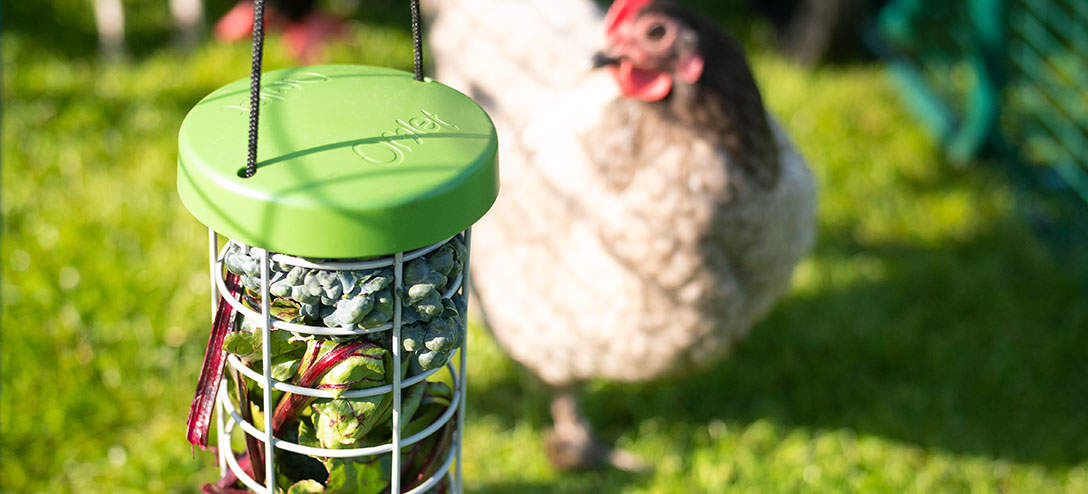
Summer Chickens
If you’re rehousing barn hens as opposed to point of lay chickens, summer is a great time to do so. Whilst rehomed barn hens will enjoy all that spring has to offer, they also enjoy a bit more sun where they can live happily as newly-liberated chickens! Ex-barn hens (and ex-battery hens too, in parts of the world where batteries are still allowed) make great pets. In spite of having been ‘retired’ by their former owners, they will have up to two years of good laying left.
Another advantage of getting chickens in summer is that if you let your hens free range in the garden during this time, they will pick off pests such as slugs and flies. However, just be mindful that as chickens are very partial to tender young plants, you may want to protect young shoots and flower beds.
If you do opt to get any chicken, be it rehomed hens or baby chicks, during this time of year, you need to be sure to keep them protected from any extreme temperatures. The hot weather, therefore, is one potential drawback of getting chickens in summer as opposed to in the spring. If you live in an area that experiences particularly hot summers, make sure your birds have plenty of shade and a well-ventilated coop. Fortunately, the Omlet Eglu Chicken Coops are perfect for keeping your flock cool and with an Eglu Coop Weather Protection shield, you’ll be able to provide a shaded environment for your chickens all day long. Take a look at our guide Keeping Happy, Healthy Hens in Summer for a bit more guidance on keeping chickens over this season.
Autumn and Winter Chickens
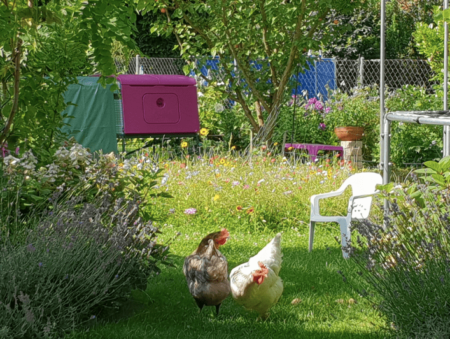 Autumn is another great season for chickens and chicken keepers. There are lots of juicy bugs to scratch for in the still-soft ground and leaf litter, and if you have any fruit trees, there are rich pickings for the birds in the shape of windfalls.
Autumn is another great season for chickens and chicken keepers. There are lots of juicy bugs to scratch for in the still-soft ground and leaf litter, and if you have any fruit trees, there are rich pickings for the birds in the shape of windfalls.
Hens often moult in the autumn, so they need a good diet to help them stay healthy and grow new feathers. Extra chicken vitamins and minerals will support them, and a little apple cider vinegar in their water will aid in ensuring they maintain a healthy, glossy new plumage.
Most chickens don’t mind the colder temperatures of winter at all. However, they do prefer not to get wet, so it’s a good idea to provide a bit of extra protection with a cover for the coop. Unless you live in a particularly cold climate, your chickens will rarely get too chilly. They are hardy birds (with the exception of some of the more delicate, decorative breeds), and will adapt to the climate. Nonetheless, it’s always a good idea to assist them wherever you can. The Omlet Eglu Extreme Temperature Protection range is great for harsher winters, offering that extra level of insulation for your flock. An insulated chicken coop such as the Eglu will also go a long way towards ensuring your birds’ health and happiness in the winter months.
Something else to note over this season is that your run will get a bit muddy! A top tip to prevent this as much as you can is to cover the ground with bark chippings. If you need a bit more help on chicken keeping in the winter, read our Winter Chicken Keeping FAQ blog.
The takeaway message here is that spring is an ideal time to introduce new hens to your garden. However, this shouldn’t discourage you as a prospective chicken keeper from getting chickens any other time of the year. With the right care and equipment, your flock can thrive in any season!
This entry was posted in Chickens
-The Best Things In Life Are Sweet-
The OMLET (Omelette) Cake
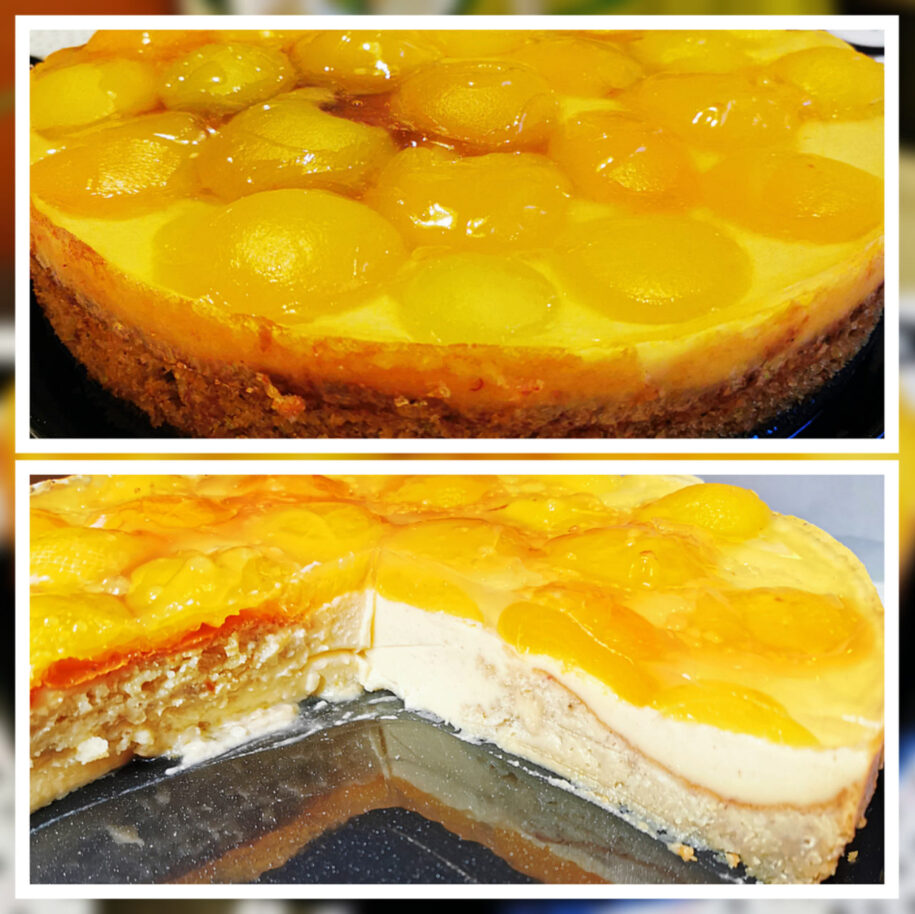 Ingredients for the cake batter (for a 9 inch round cake tin):
Ingredients for the cake batter (for a 9 inch round cake tin):
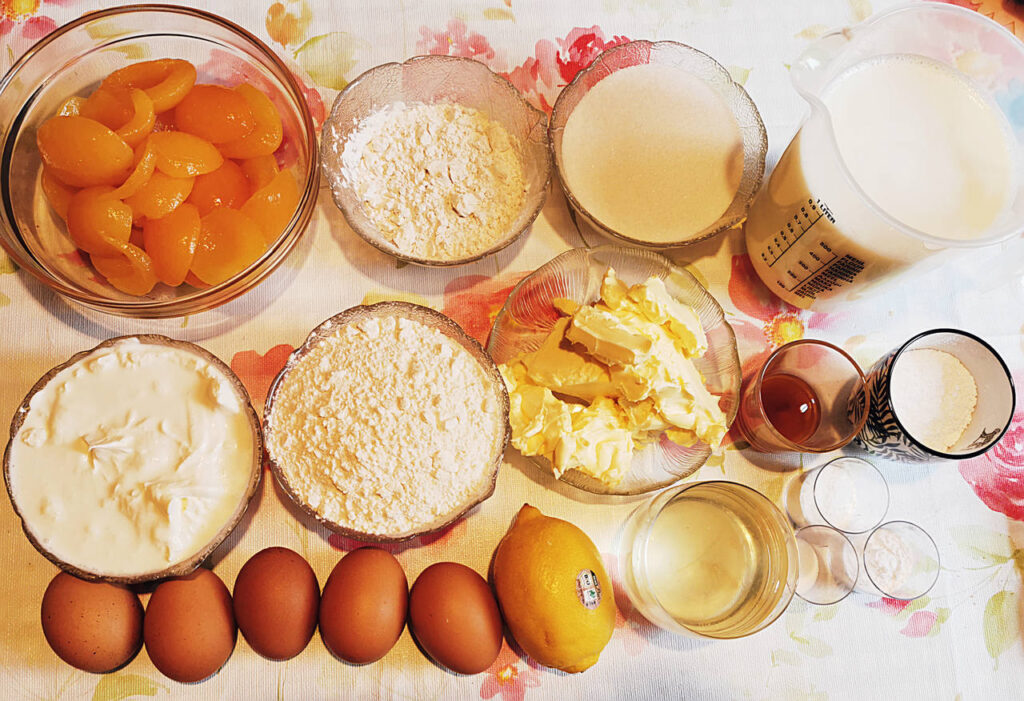
- 900 ml milk*
- 250 g sugar
- 250 g butter/margarine
- 4 tbsp lemon juice
- 5 eggs*
- 250 g flour
- 1 packet baking powder
- a pinch of salt
- 1 package of clear cake glaze*
- 1 can apricots halves (850 g drained net weight)
- 1 can apricots halves (425 g drained net weight)
Ingredients for pudding cream:
- 100 ml milk*
- 2 packets vanilla pudding powder
- 80 g sugar
- 1 packet vanilla sugar
- 2 cups sour cream*
*For a plant-based or vegan option:
As a milk substitute you can use any non-dairy milk (e.g. almond or oat milk). As 1 egg substitute use 1/2 mashed banana (5 eggs = 2.5 bananas) or 70 g apple puree (5 eggs = 350 g). You can buy vegan sour cream or soy yogurt. Instead of the clear cake glaze you can use agar-agar powder.
Instructions
- Grease a cake tin (9 in). Preheat oven to 340 degrees Fahrenheit (convection oven).

- Boil 900 ml milk in a saucepan. Mix in a bowl the remaining milk, 80 g sugar and vanilla pudding powder until smooth, stir into the boiling milk and cook well for 1 minute while stirring. Pour into a bowl and let cool, stirring several times.
- Mix butter/margarine, 200 g sugar, 1 pinch of salt with the mixer until you reach a creamy texture. Mix in eggs one at a time. Mix flour and baking powder and stir in 2 tsp of lemon juice. Put the batter in a greased cake tin and bake on the middle shelf for 20 minutes.
- In the meantime, drain the apricots well and collect the juice. Stir the pudding again, and now stir in the sour cream with a whisk. After the 20 minutes baking time, spread the pudding cream evenly on the batter. Cover the cake with apricots and bake for another 20-30 minutes. Let cool down.
- Mix the icing powder, remaining sugar, 1/4 liter of apricot juice and remaining 2 tsp of lemon juice in a saucepan and bring to the boil while stirring. Now spread the glaze with a tablespoon over the apricot halves so that it looks like egg white. Allow to become firm.

*You can use peaches instead of apricots as well.
If you want to bake the ultimate “Omlet”-cake with a 4 inch cake tin, use 1/2 of the ingredients and only one apricot halve on top of it.
If you prefer a more traditional Easter cake, here is a super delicious yet easy recipe:
Carrot-Marzipan-Cake
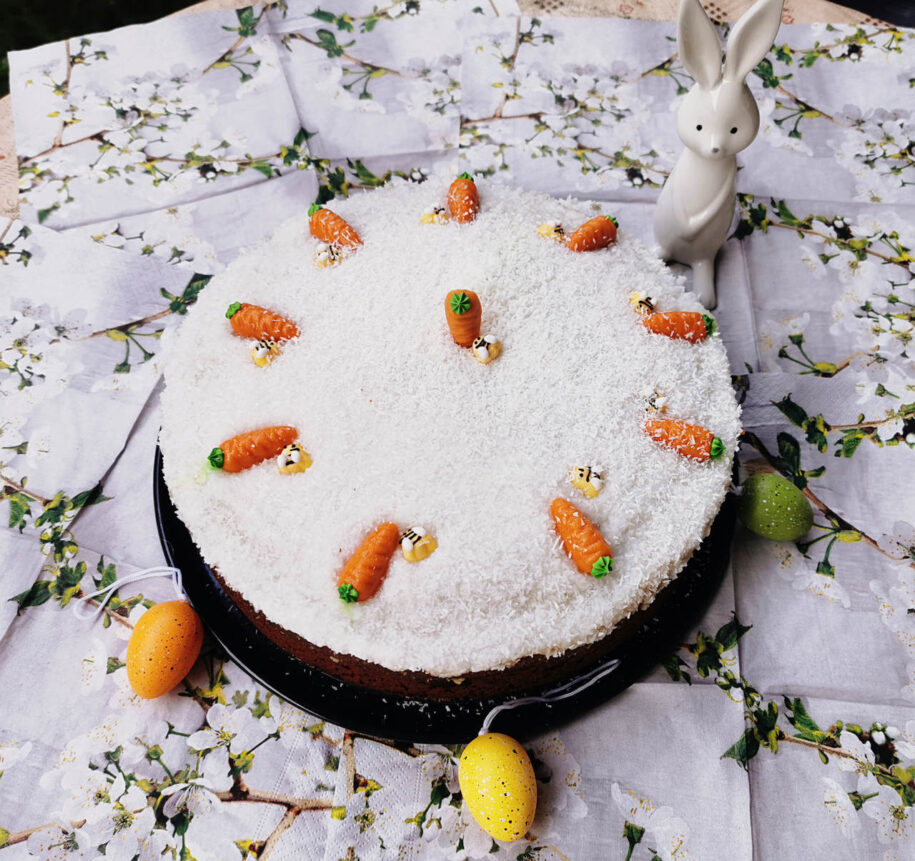
Ingredients for the cake batter:
- 350 g wheat or spelt flour
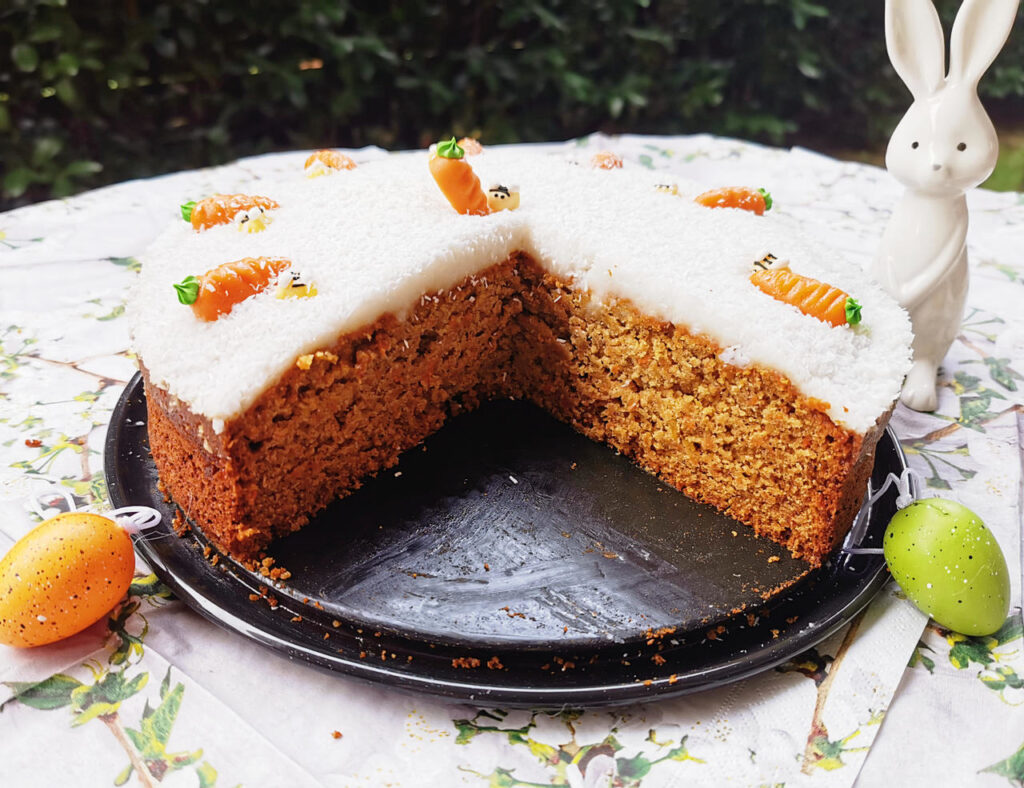
- 4 eggs*
- 400 g carrots
- 100 g ground hazelnuts
- 100 g ground almonds
- 200 g sugar
- 1 packet vanilla sugar
- 1/4 tsp vanilla extract
- 1 vanilla pod
- 1 tsp cinnamon
- 1 packet baking powder
- 1 tsp baking soda
- 200g marzipan
- 200 ml rapeseed or sunflower oil
- 200 ml milk*
- juice of 1/2 lemon
- extra portion love
Frosting:
- 70 g icing sugar
- 200 g coconut yogurt
- 30 g coconut paste
- shot of lemon juice
optional: food coloring, e.g. green color

Decoration: e.g. Marzipan carrots, chopped pistachios, dried flowers, grated coconut
*For a plant-based or vegan option:
Use 2 tsp baking soda and 2 tsp cider vinegar or alternatively banana/apple puree as egg substitute (1/2 mashed banana per egg; 70 g apple puree per egg).
As a milk substitute you can use e.g. almond milk or oat milk, or any other non-dairy milk you prefer.
Instructions
1. Grease a cake tin (about 9 in) or use baking paper. Preheat oven to 350 degrees fahrenheit (convection oven).
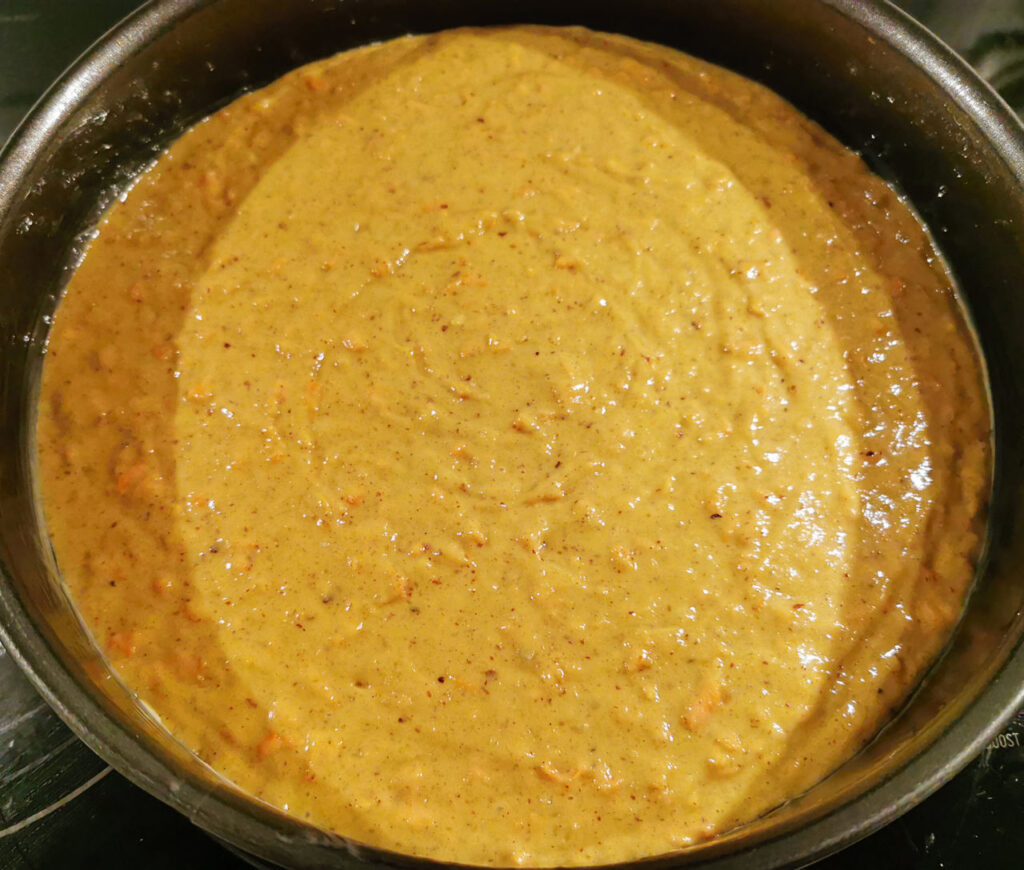
2. Mix dry ingredients (flour, hazelnuts/almonds, sugar, baking powder, baking soda, cinnamon) and the eggs in a bowl with a mixer. In a separate bowl, peel and grate carrots and mix them with the wet ingredients (vanilla extract, oil, milk, lemon juice).
3. Now slowly heat the marzipan in a saucepan, stirring repeatedly until it becomes a liquid mass. Mix the dry and wet ingredients together and gradually add the marzipan to the batter, mix well.
4. Pour the batter into the cake tin, smoothen it and bake it for about 50 minutes (use the tooth-pick test to make sure it is fully cooked).
5. Let the cake cool down and prepare the frosting in the meantime. Mix the sifted icing sugar with yogurt and coconut puree and season with more icing sugar and a shot of lemon juice. You can add food coloring to the frosting if you wish. Now spread the frosting on the cooled cake and decorate as desired, e.g. with marzipan carrots, chopped pistachios or dried flowers.
Enjoy!
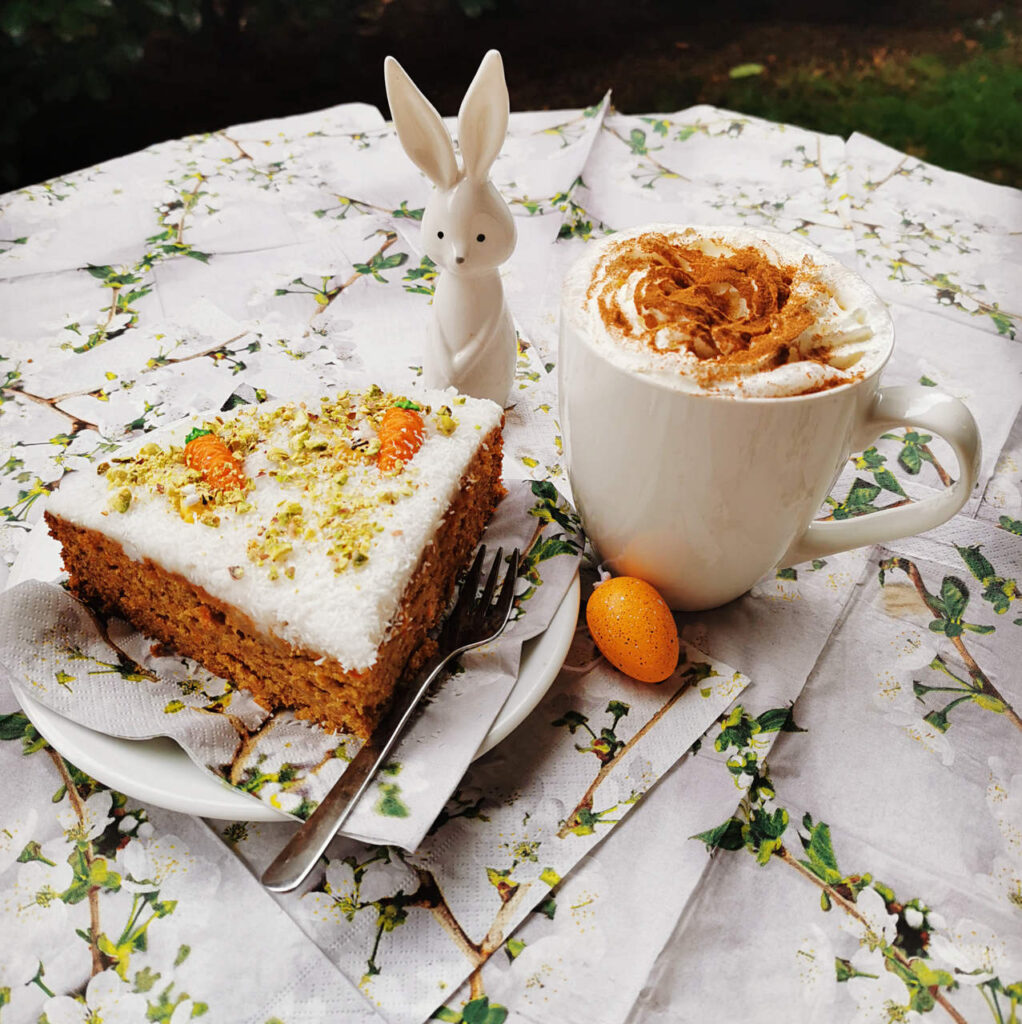
Bon Appétit
&
Happy Easter from the Omlet Team!
Tag us on social media (Instagram: @omletusa) with an image of your cake!
This entry was posted in Food

Are you eggcited about Easter? Easter is the second biggest family gathering of the year, so let’s celebrate it with some extra “hoppy” Easter games! This year, Easter will be celebrated in a small circle, but this doesn’t mean you have to miss out on all the great fun. Here are 5 festive Easter games that will keep the whole family entertained!
1- Easter Tic-Tac-Toe
This is mostly played by young children but makes a great strategy game for adults too! To make this game extra “hoppy” for Easter, you could paint real or plastic eggs in different colours or decorate them to distinguish each player.
Players then take it in turns placing their egg on the spaces in a 3◊3 grid. The player who succeeds in placing three of their eggs in a diagonal, horizontal, or vertical row is the winner!
2- Hula Hoop Aim
This is a great game for families or groups, where everyone will be entertained – and it’s super easy. Set up five hula hoops on the floor and assign a point value to each (example: the closest hoop is 10 points, the second closest 20,…, and the furthest hoop is 50 points). Give each player five plastic eggs. Have them toss the eggs into the hoops to see who can rack up the most points!
You can decorate the eggs together with your children by painting them in individual colors, so that each player has their own colored egg. Let the fun begin!

3- Bunny Hop Sack Race
Old but gold: the hoppiest game in our top picks! Since bunnies hop, having a good old-fashioned sack race is a great fit for Easter, your children will love racing you!
Set up each player with a burlap sack – decked out with a bunny tail – and have them race to the finish line. Make sure you’re on a soft ground. Just don’t forget to whip up some yummy Easter treats for the grand prize winner!
4- Pin Rabbit Tails
This game is for the whole family! Get pom poms and attach double-sided sticky tape to each of them. The players then have to stick the rabbit tails (pom poms) to one another…whoever ends up with most tails on them after 5 minutes of playing loses the game!
Once the game is finished, your children can get creative and do some Easter crafts. The possibilities are endless!
5- Easter Egg Piñata
Piñatas are great for any celebration but they’re also fun to make! Kids will have a blast making these as much as they will enjoy tearing them down.
You’ll need the following suppliers:
balloons (small, middle and/or big)
- craft glue
- 2 cups water
- tissue paper and/or crepe paper streamers
- 1 cup flour
- decoration
- newspaper
- craft knife
- wire, string, ribbon or rope (to hang the piñata)
- piñata bat (e.g. baseball bat)
Step 1: Blow up the balloon, tie it closed and tear or cut newspaper into strips.
Step 2: Mix water with flour to create paste. Dip the newspaper strips in the paste and apply the moistened strips to the balloon. Repeat this until the balloon is completely covered – three layers will help make the piñata strong. Make sure not to cover the knot. This is where you’re going to put the treats later. This part is messy but the kids will love getting their hands dirty. To hold the balloon in place while applying the newspaper strips, place it on top of a plastic container that will act as a stable base.
Step 3: Let the piñata dry for at least 24 hours, making sure to rotate it so all sides dry.
Step 4: After it’s completely dry, cut different colored tissue papers in strips and give the kids freedom to choose their colors and start adding stripes with craft glue to cover the base layer. Decorate as you wish. Now pop the knot with a craft knife and pull out the balloon. Punch two small holes around the main hole. Tie a string or ribbon to the holes to create a loop.
Step 5: Now fill your piñata with some delicious treats, like mini chocolate eggs, jelly beans, marshmallows or any other sweets… whatever you prefer!
Step 6: Glue down some crepe paper on top of the hole, or use masking tape. The goal is to prevent the filling of the piñata from falling out before you’ve actually hit it. Tie another piece of string, ribbon, or rope to the loop you’ve already made and use this to attach the piñata to whatever you’d like to hang it from.
Here is a video about how to make a piñata and who explains it better than kids itself?
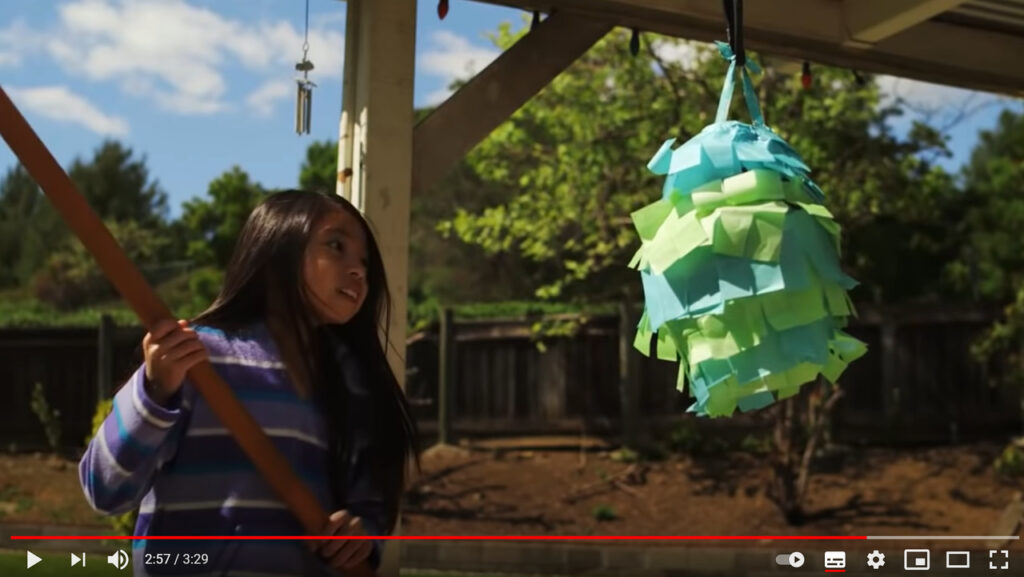
BONUS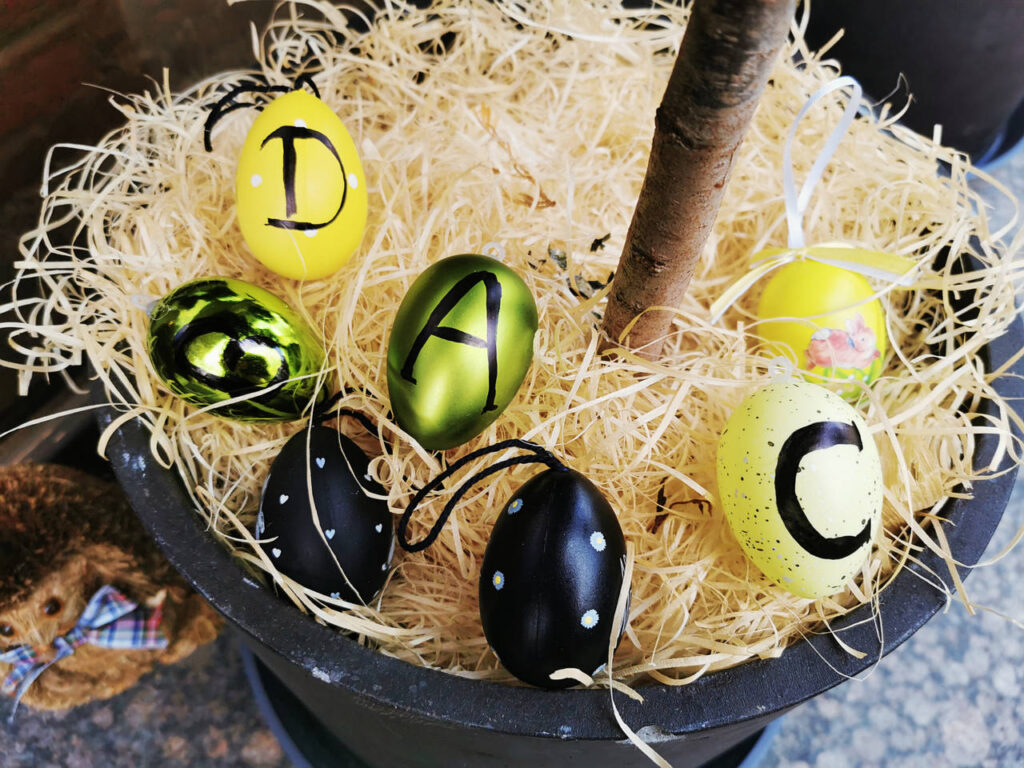
Here comes an eggstra game! Everything’s a bit more fun with a little mystery. Check out this super cool secret Easter egg hunt!
Let the children – and adults – hunt for the eggs but this time, write a letter on each egg. In the end, when all eggs are collected together, they have to decode the message and they’ll get the clue where the Easter gift is actually hidden. Example: if you hide the gift in the garage, place the letters “G”, “A”, “R”, “A”, “G”, “E” individually on each egg. If they put the letters together, they know where to go for a successful egg hunt! – You can also use Kinder eggs and put individual messages inside.
Omlet wishes you Happy Easter
This entry was posted in Crafting








 Ingredients for the cake batter (for a 9 inch round cake tin):
Ingredients for the cake batter (for a 9 inch round cake tin):










